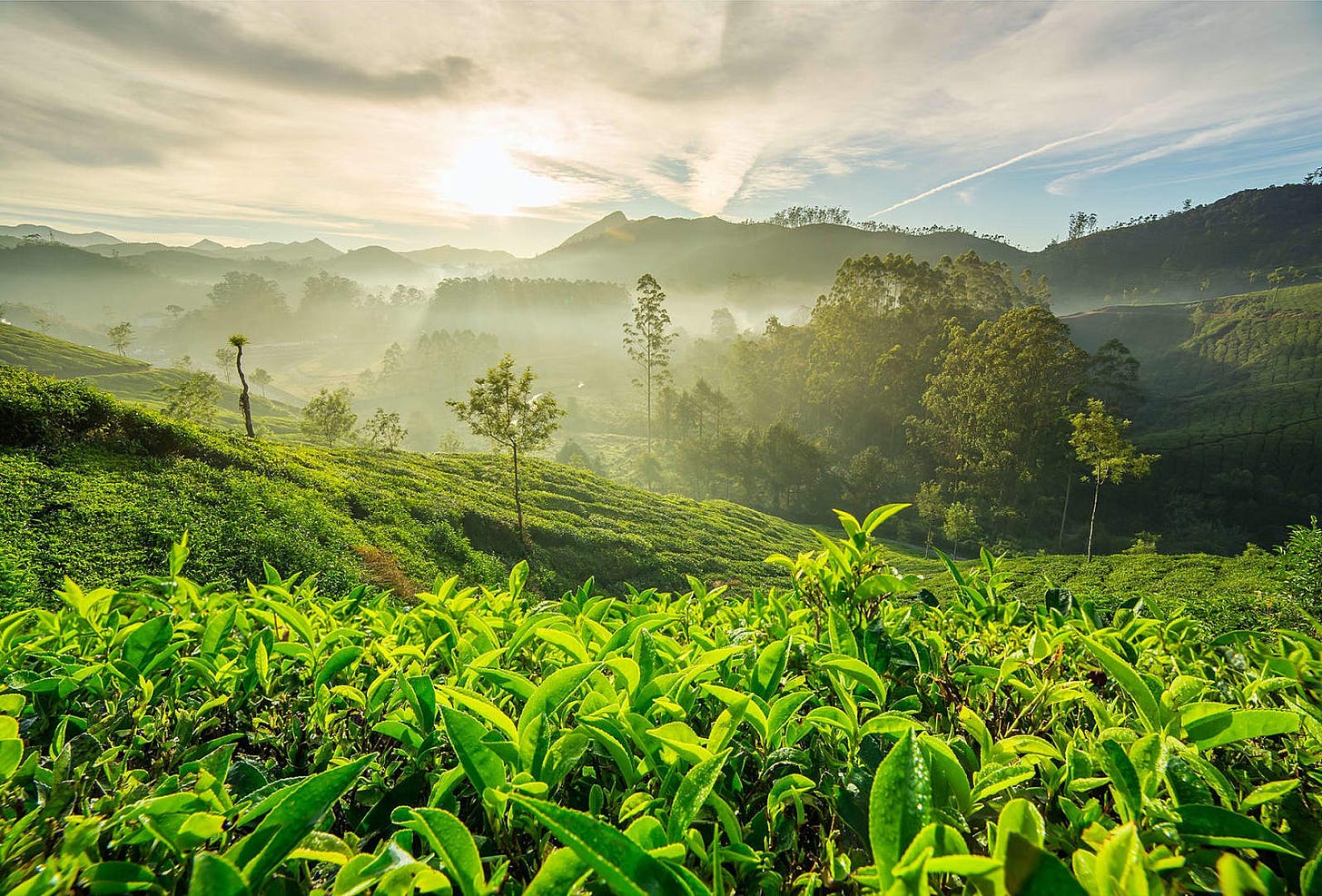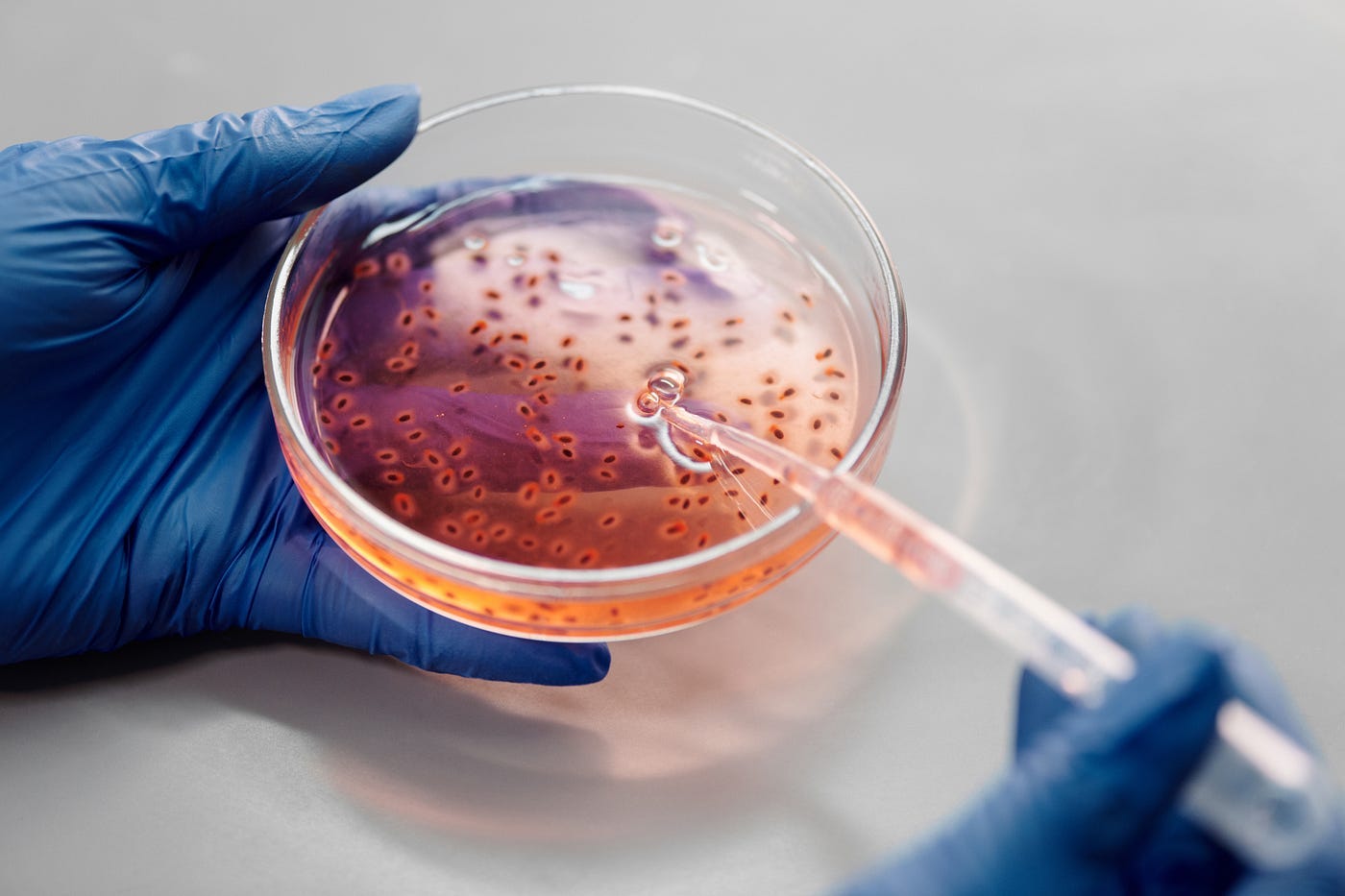Coffee again: Once a Pioneer, always a Pioneer
Molecular, Cell-Based Coffee is Revolutionizing Horticulture and Plant-Based Traditional Industries
👋
The horticulture industry has traditionally been a cornerstone of agriculture, providing a wide range of plant-based products that include everything from fruits and vegetables to herbs and ornamental plants. However, the industry is undergoing a transformative shift, driven by technological advancements and changing consumer preferences. New business models are emerging that offer both sustainable and innovative opportunities, leveraging cutting-edge techniques like cellular agriculture, hydroponics, and aeroponics. These aren't just buzzwords; they represent a fundamental change in how we approach plant cultivation, offering methods that are often more efficient and environmentally friendly than traditional farming.
Cellular agriculture, for instance, allows for the production of plant-based products in a lab setting, reducing the need for extensive land use and mitigating many of the environmental challenges associated with traditional farming, such as pesticide use and water consumption. This is particularly relevant in the context of increasing concerns about climate change and environmental degradation. Cellular agriculture can serve as a complementary approach to traditional horticulture, offering a way to produce high-quality, consistent products with a lower environmental footprint. It's a model that has already shown promise in other sectors, such as the production of lab-grown meat, and its application to plant-based products represents a significant opportunity for innovation.
Hydroponics and aeroponics offer additional avenues for sustainable growth. These soilless farming methods allow for the precise control of nutrients, water, and light, enabling faster plant growth and higher yields. They also offer the advantage of being adaptable to a variety of settings, from large-scale commercial operations to small urban farms. This adaptability makes them particularly appealing as a solution to some of the challenges posed by urbanization and reduced availability of arable land. Moreover, these methods are well-suited for the cultivation of specialty crops, opening up new market opportunities for growers.
The rise of these new business models is also being fueled by changing consumer preferences. Today's consumers are increasingly interested in the provenance of their food, seeking products that are not only high-quality but also sustainably and ethically produced. This has led to a surge in demand for organic, locally-sourced, and artisanal products, trends that align well with the capabilities offered by these innovative farming methods. For example, a hydroponically-grown tomato can be marketed not just on its taste but also on its reduced water usage, appealing to environmentally-conscious consumers.
Brewing Change: The Current Landscape of the Coffee Industry as a Plant-Based Pioneer
The coffee industry serves as a compelling example of the complexities and opportunities inherent in plant-based businesses. With a global market that's expected to generate revenue of $88.3 billion in 2023, coffee is more than just a popular beverage; it's an economic powerhouse that has significant implications for trade, employment, and even cultural identity. However, the industry is not static; it's undergoing a period of significant change, driven by a variety of factors ranging from technological innovation to evolving consumer preferences.
One of the most notable trends in the coffee industry is the growing focus on specialty coffee. This is a segment of the market that prioritizes quality, flavor, and ethical sourcing over mass production and low cost. Specialty coffee often comes with certifications like Fair Trade or Organic, reflecting a broader consumer shift towards products that are perceived as being more sustainable and ethically produced. This trend is not just a niche; it's becoming mainstream, driven by a younger generation of consumers who are willing to pay a premium for products that align with their values.
This focus on quality over quantity has had a ripple effect throughout the industry, affecting everything from farming techniques to distribution channels. For example, the demand for high-quality beans has led to increased interest in single-origin coffees, which are sourced from one location rather than being a blend from multiple regions. This, in turn, has implications for farmers, who can command higher prices for beans that meet these stringent quality criteria. However, it also places additional pressures on them to adopt sustainable farming practices, both to meet certification requirements and to ensure the long-term viability of their crops.
Sustainability is another key theme that's reshaping the coffee industry. Traditional coffee farming is often associated with practices that are environmentally damaging, such as deforestation and the use of harmful pesticides. However, there's a growing awareness of the need for more sustainable methods, driven by both consumer demand and the harsh reality of climate change, which poses a significant threat to coffee-growing regions around the world. This has led to increased interest in alternative farming methods, such as shade-grown coffee, which not only reduces the environmental impact but can also produce beans that are of higher quality.
Technological innovation is also playing a role in the industry's evolution. From blockchain technology being used to improve supply chain transparency to the development of new brewing methods that enhance flavor extraction, technology is being leveraged in various ways to improve both the quality and sustainability of the end product. Even the cafes where people consume coffee are changing, with a growing emphasis on creating experiences rather than just serving beverages. This includes everything from the layout and design of the space to the use of technology to create personalized experiences for customers.
From Bean to Lab: Diverse Business Models Brewing in the Coffee Sector
The coffee sector is a fascinating study in the diversity of business models that can emerge from a single plant-based commodity. From the cultivation of coffee beans to the final cup served in a café, the industry is a complex web of interconnected businesses, each with its own challenges and opportunities. This complexity offers a rich tapestry of business models that can serve as templates or inspiration for other plant-based enterprises seeking to diversify their income streams and adapt to a rapidly changing market landscape.
At the most basic level, there's the traditional farming model, where growers cultivate coffee plants, harvest the beans, and sell them to distributors or directly to roasters. This model has been the backbone of the coffee industry for centuries, but it's also one that's facing significant challenges, from the environmental impact of traditional farming methods to the vulnerability of crops to climate change. However, even within this traditional framework, there are opportunities for innovation and differentiation. For example, some farmers are turning to organic or shade-grown methods to produce beans that not only command a premium price but also appeal to environmentally-conscious consumers.
Beyond farming, there are numerous other business models that have emerged to capitalize on the global love affair with coffee. Roasters, for instance, serve as the critical link between the raw beans and the final brewed product, and their role allows for a great deal of specialization and branding. Some focus on single-origin or specialty coffers, while others create unique blends that are sold under their own brand name. The rise of home brewing has also created a market for high-quality, artisanal roasting that can be done on a smaller scale, opening up opportunities for small businesses and even individual entrepreneurs.
Cafés and coffee shops represent another business model that has seen significant evolution in recent years. The traditional café has been transformed by the rise of third-wave coffee shops, which place a premium on high-quality beans, expert brewing techniques, and a focus on the overall customer experience. This has led to a proliferation of niche cafes, from those that serve only cold brew to others that offer live music, co-working spaces, or even art galleries. The café model has also been adapted for various settings, from busy urban centers to rural communities, each with its own set of challenges and opportunities.
Even within the realm of distribution and retail, there are innovative business models emerging. Subscription services that deliver freshly roasted beans to consumers' doors are capitalizing on the demand for convenience and quality. Meanwhile, the rise of e-commerce has allowed even small roasters and coffee shops to reach a global audience, breaking down geographical barriers and opening up new markets.
What's particularly interesting is how these various business models can intersect and create synergies. A farmer who produces high-quality, organic beans might partner with a specialty roaster to create a unique product that's then sold through a subscription service. Or a café might source its beans directly from a farm, creating a farm-to-cup experience that appeals to consumers seeking both quality and sustainability.
The Future in a Cup: Molecular, Cell-Based Coffee
The concept of molecular, cell-based coffee represents a radical departure from the traditional beans-based model, offering a glimpse into a future where the lines between natural and synthetic, traditional and modern, are increasingly blurred. At its core, molecular coffee seeks to replicate the experience of drinking traditional coffee, from the aroma and flavor to the mouthfeel and even the caffeine content, but without the need for actual coffee beans. This is achieved through a process of cellular agriculture, where the essential compounds that give coffee its unique characteristics are isolated and then synthesized in a controlled environment.
The journey to create molecular, cell-based coffee begins not in the fields but in the lab, where scientists identify the specific molecules responsible for coffee's taste and aroma. These can include everything from oils and acids to proteins and aromatic compounds. Once these molecules are identified, the next step is to figure out how to produce them. This often involves using microorganisms like yeast or bacteria, which are genetically engineered to produce the desired compounds. These microorganisms are then placed in a bioreactor, where they are fed a nutrient-rich solution that enables them to multiply and produce the target molecules.
The resulting compounds are then harvested from the bioreactor and combined in precise proportions to create a liquid that mimics the taste, smell, and appearance of traditional coffee. Because the process is controlled at the molecular level, it offers a high degree of consistency and customization. Want a coffee that's less acidic? Simply adjust the levels of certain acids. Looking for a brew that's extra aromatic? Increase the concentration of specific aromatic compounds. The possibilities are virtually endless, limited only by our understanding of coffee's complex chemistry.
But the implications of molecular, cell-based coffee go beyond just customization. One of the most compelling aspects of this technology is its potential for sustainability. Traditional coffee farming is resource-intensive, requiring large amounts of water, land, and labor. It's also vulnerable to the impacts of climate change, which threatens coffee-growing regions with increasing temperatures and unpredictable weather patterns. Molecular coffee, on the other hand, can be produced with a fraction of the resources, in a controlled environment that's not subject to the vagaries of climate. This not only makes it more sustainable but also opens up the possibility of producing coffee in regions where it would be otherwise impossible to grow, further reducing the environmental impact associated with transportation.
⌛
What does all that mean for the farmers who rely on traditional coffee cultivation for their livelihoods? How will consumers react to a product that challenges their notions of what coffee is and where it comes from? And perhaps most importantly, can a lab-grown product ever truly replicate the complex interplay of factors that give traditional, beans-based coffee its soul?
I’ll try to answer these and other matters very soon.
See you next time,
Eduardo
🔗 Find me on Instagram, LinkedIn, or visit lindesburnao.com for professional contact.








